With spring rains come flowering plants and hummingbirds. While these birds don’t particularly care about a flower’s growing cycle, they do have a preference for the color and shape of springtime foliage. Hummingbirds are attracted to bright-colored flowers. But they also like tubular shapes because they tend to produce more nectar. And if you are an avid gardener and bird lover, you probably know how picky the hummingbird can be. Discover these six great annuals that attract hummingbirds, including their hardiness zones and growing conditions.
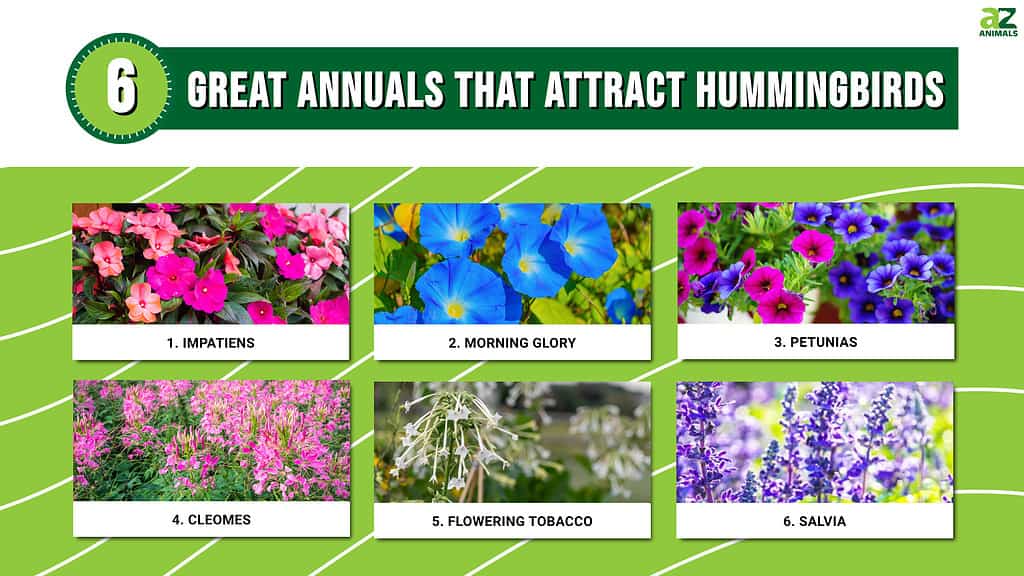
1. Impatiens
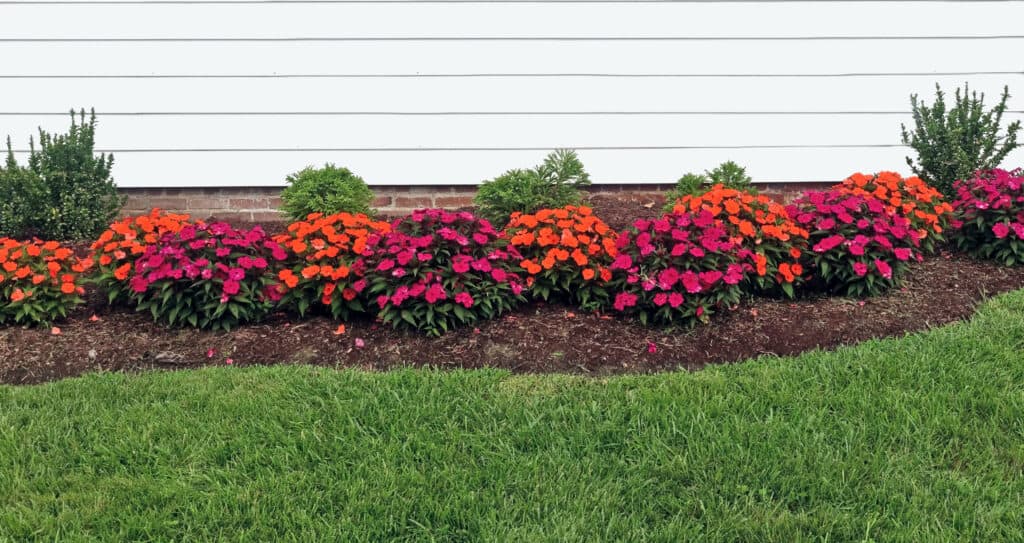
Impatiens come in bright colors and are fantastic plants for flower beds and borders.
©iStock.com/Joe_Potato
These flowers check all the right boxes for a hummingbird. They have nectar tubes filled with sweet solution, and they come in bright, showy colors. Plus, they look great in a summer garden.
These annuals like shade and moisture, but they need well-drained soil and protection from wind. How tall they grow depends on how close they are together. Impatiens that are planted close together can grow over 30 inches tall. They need part sun and a neutral soil PH. And they grow in hardiness zones 10 and 11, meaning they do well in southern regions of the United States. Although, they grow well up along the West Coast, as well.
2. Morning Glory
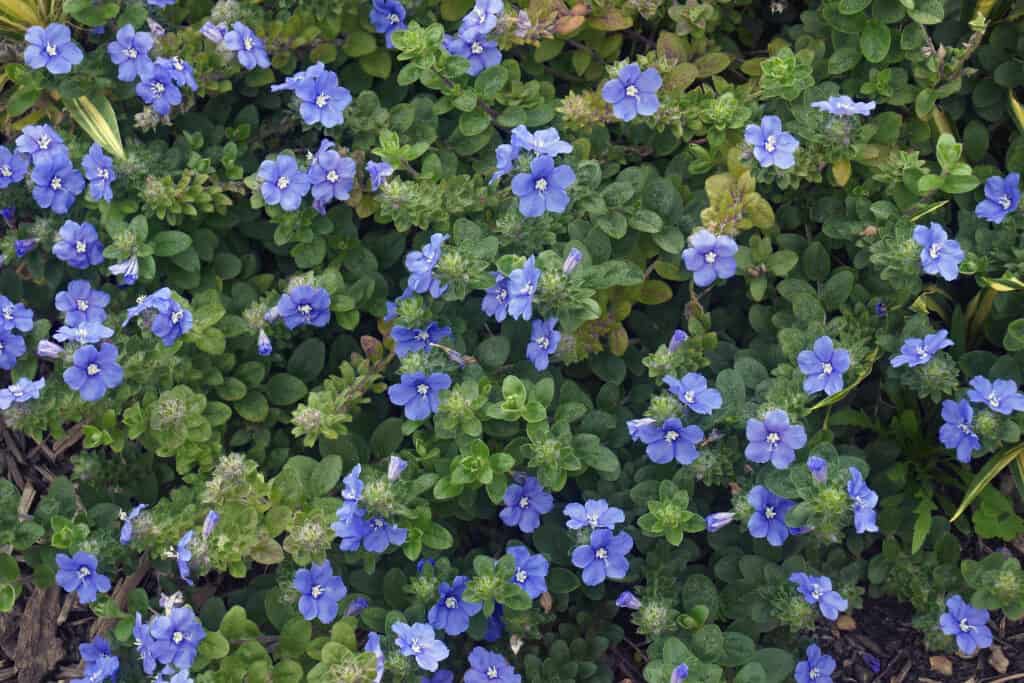
Morning Glory is a tender annual.
©iStock.com/nickkurzenko
The morning glory not only attracts hummingbirds but brings all types of butterflies, too. These flowers add a pop of color while giving your garden an old-school romantic feel for the summer. They require full sun and are tolerant to drought. However, morning glories are considered tender annuals, meaning they are sensitive to cold temperatures and late spring frosts.
To get started, plant them in a sunny spot with well-draining soil and shelter them from adverse weather. You can also plant them near a fence or trellis so their vines can climb and decorate your yard. The morning glory has a hardiness zone of two through 11, giving it a wide growing range across the country.
3. Petunias
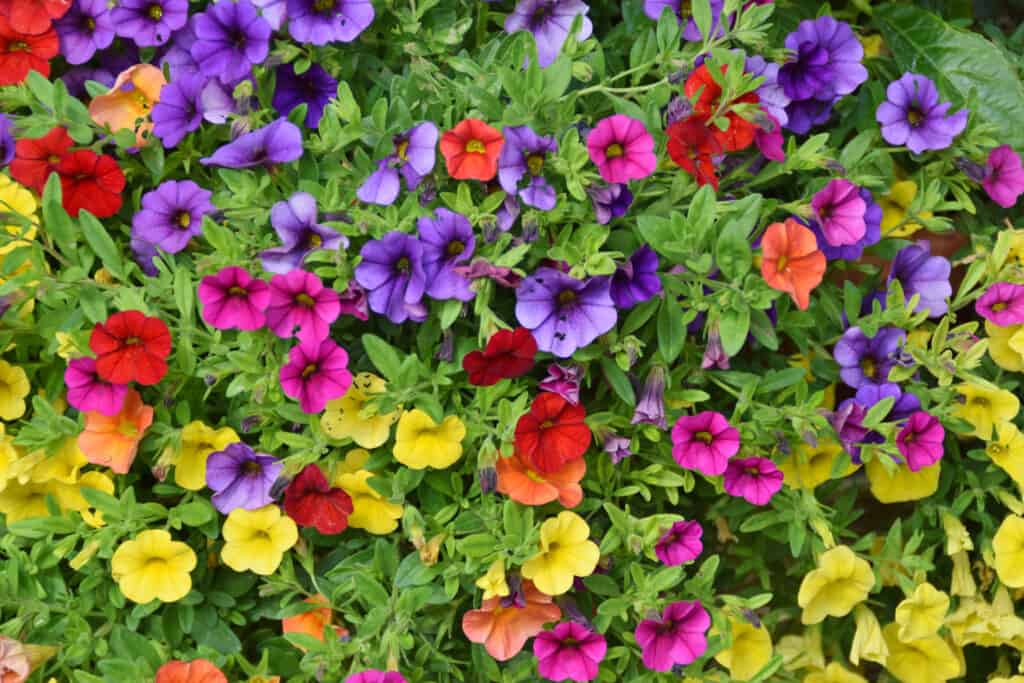
Petunias look great on the ground or in hanging baskets.
©Eleonora Scordo/Shutterstock.com
Popular for their long flowering period, petunias can be both annuals and tender perennials. They add beautiful pops of color to your garden and have a slightly sweet scent. And they are versatile flowers that can be planted as borders or groundcover. Or you can put them in hanging baskets and containers.
Petunias need full sun and well-drained slightly acidic soil. Under the right conditions, they can bloom from spring until fall. And they grow in hardiness zones nine, 10, and 11, preferring more southern regions.
4. Cleomes
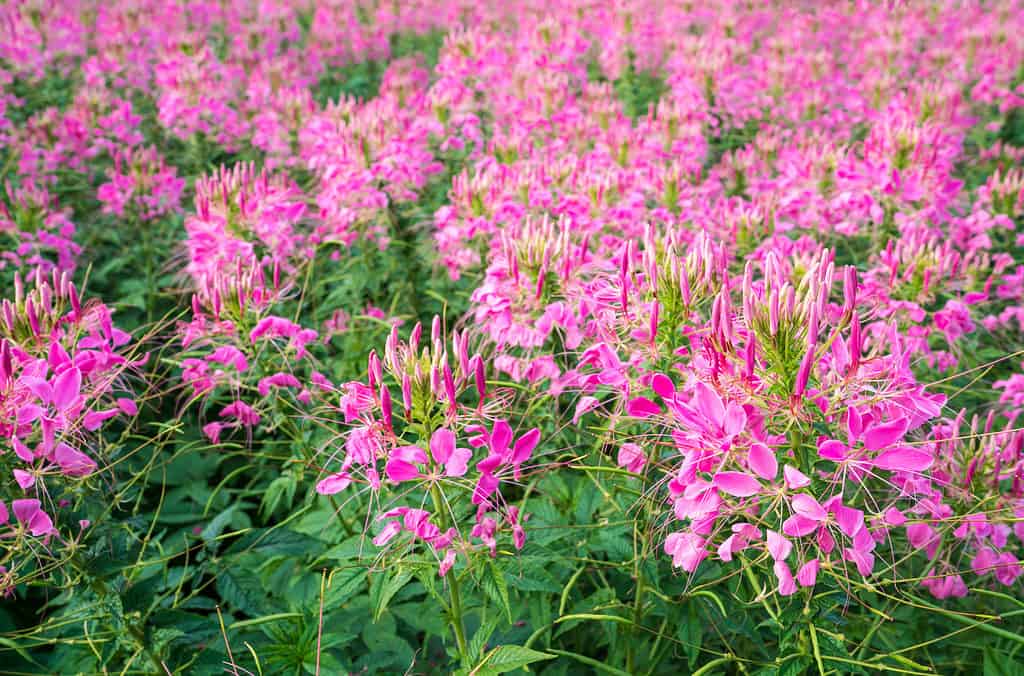
Cleome can grow in full or partial shade.
©QBR/Shutterstock.com
While cleomes aren’t usually a favorite among gardeners due to their weedy appearance, these tall pink, purple, and white plants offer a unique look for any garden. Plus, the hummingbirds love them. They are disease and pest resistant and can grow in full or partial sun. And they look amazing, whether grown in blocks or broken up with perennials. Most gardeners plant them directly in acidic to neutral, well-drained soil. Cleomes bloom in summer and do best in hardiness zones 10 and 11. You may find them more often in Southern California and Florida.
5. Flowering Tobacco
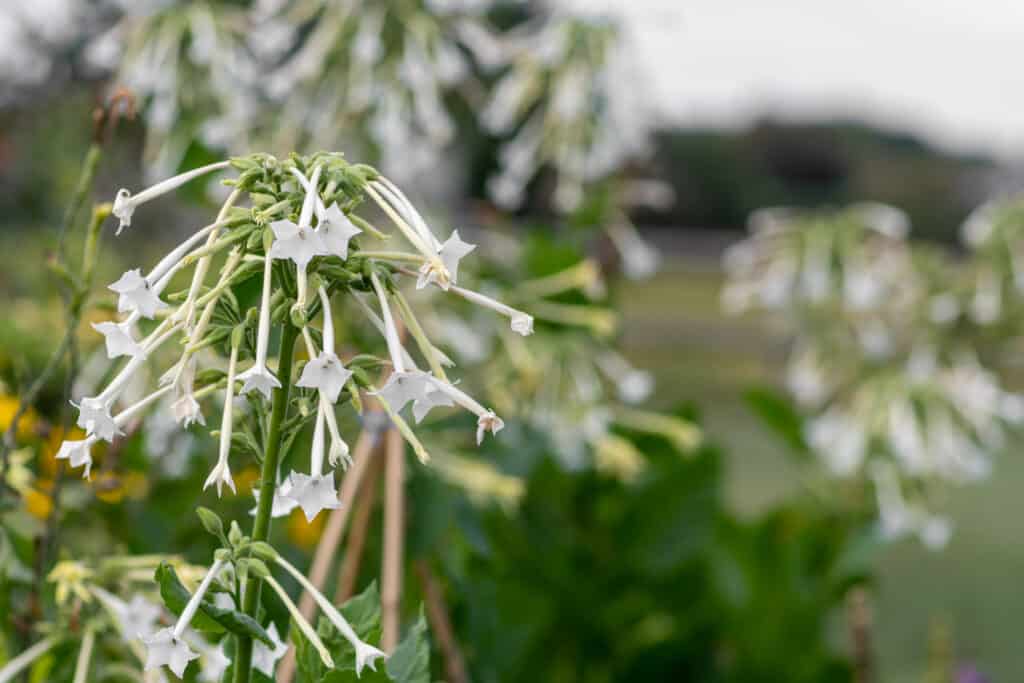
Flowering tobacco has a strong, sweet smell.
©iStock.com/Tom Meaker
Native to South America, flowering tobacco is an ornamental plant that adds fragrance and color to any property. Once you plant these, no summer night will be complete without their strong, sweet smell. And do be surprised if you have more than hummingbirds visit these flowers. However, flowering tobacco is toxic to humans and pets, so remember this before planting.
While flowering tobacco is technically a perennial, it is often planted as a fast-growing annual. It requires full or partial sun and moist, well-drained soil. But it’s not picky about the soil type, flourishing in acidic, neutral, or alkaline environments. And they do best in hardiness zones 10 and 11.
6. Salvia

Beautiful salvia repels deer due to its strong smell.
©TuiPhotoEngineer/Shutterstock.com
Salvia, or sage, is a lovely aromatic that can be planted as an annual or a perennial. This flower is resistant to foraging animals and is loved by hummingbirds, butterflies, and bees. Along with its delightful smell, salvia also adds bright colors to the garden, featuring colors in pink, purple, blue, red, and white.
They are heat and drought resistant, growing in full sun with slightly acidic soil. Some light-colored varieties can grow in partial shade, but they won’t flower as well. All types need well-drained soil. And they do well in hardiness zones 5, 6, 7, 8, 9, and 10, giving them a large growing range across the country. However, they don’t do as well in the far northern regions.
Bonus: Three More Annuals That Attract Hummingbirds
We thought that we should add three hummingbird favorites that grow wild all over North America. These nutritious flowers can be tamed to enhance any garden within their hardiness zones to delight hummingbirds and all other pollinators alike.
Trumpet Honeysuckle
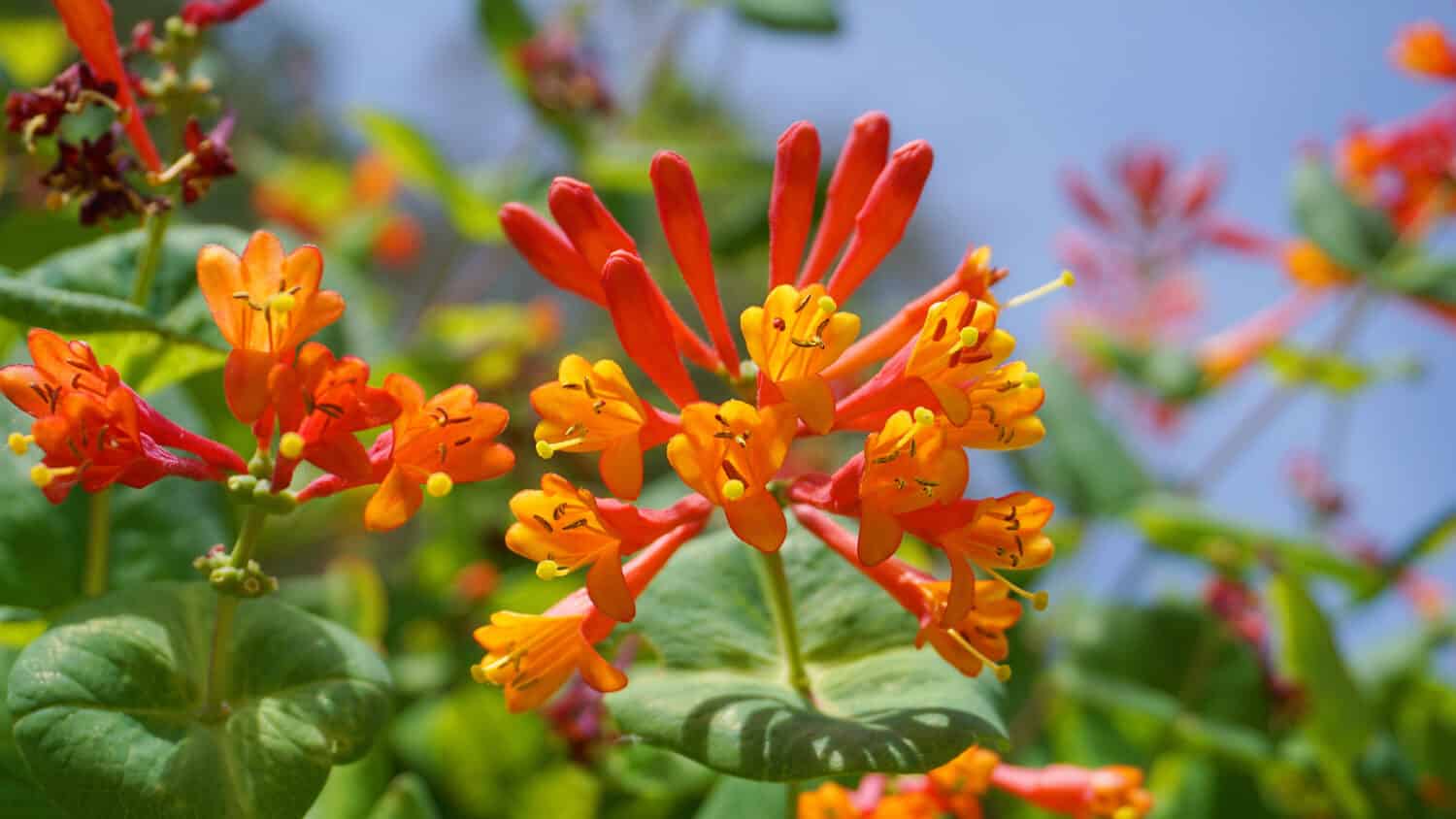
Trumpet honeysuckle is native to the southeastern United States.
Image: lenic, Shutterstock
©lenic/Shutterstock.com
Hummingbirds flock to the banquet offered by this delectable flowering vine that can be found growing wild all over the southeastern United States. Trumpet honeysuckle should be planted near a tree, wall, fence, or other garden structure so it can climb. It thrives in USDA Hardiness Zones 4 to 9 in full to part sun in neutral to acidic, medium moisture, well-drained soil.
Sunflowers
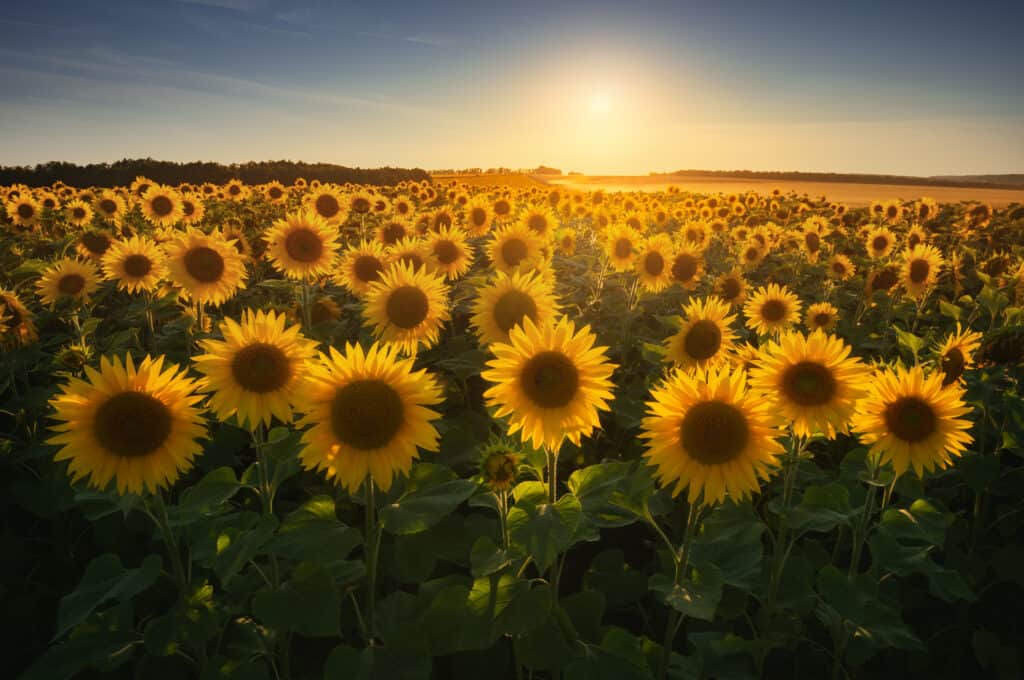
Sunflowers are beloved by all pollinators.
©iStock.com/oleshkonti
Sunflowers are an excellent choice for all pollinators – but hummingbirds especially love their tiny tubular-shaped flowers in the dark center that are bursting with sweet nectar. Sunflowers are native throughout North America in 52 species. Sunflowers require full sun and nutrient-rich, well-drained soil. They do well in zones 2 to 11.
Red Columbine
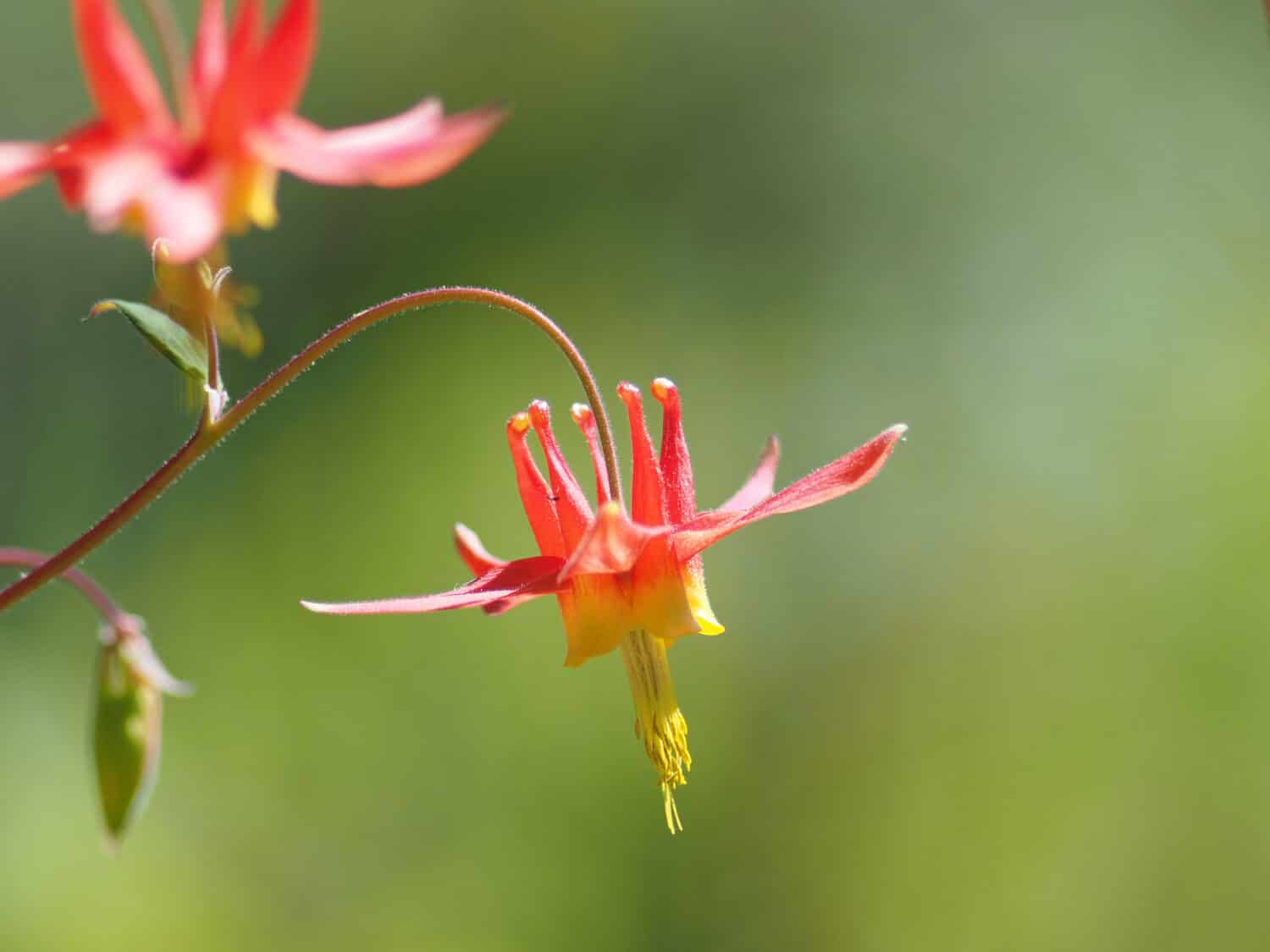
Red columbine has twice the sugar content of other native columbines.
Image: TamasV, Shutterstock
©TamasV/Shutterstock.com
We know that hummingbirds are attracted to the color red – and red columbine gives us a little insight into why. It’s nectar has twice the sugar content of other columbines! This North American wildflower blooms in early spring to welcome all newcomers with a special high-energy drink. You can plant this lovely flower in zones 2 to 9 in light to moderate shade to full sun. This plant re-seeds easily and does best in well-drained soil.
Summary of Great Annuals That Attract Hummingbirds
| Rank | Annual | Hardiness Zone |
|---|---|---|
| #1 | Impatiens | 10, 11 |
| #2 | Morning Glory | 2 – 11 |
| #3 | Petunias | 9 – 11 |
| #4 | Cleomes | 10, 11 |
| #5 | Flowering Tobacco | 10, 11 |
| #6 | Salvia | 5 – 10 |
The photo featured at the top of this post is © Ole Schoener/Shutterstock.com
Thank you for reading! Have some feedback for us? Contact the AZ Animals editorial team.






